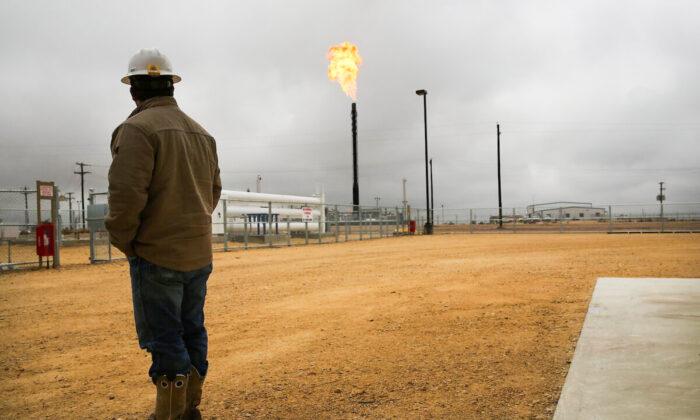Natural gas prices are expected to be “volatile” across the United States as the winter heating season begins amid uncertainty about the weather, according to the Energy Information Administration (EIA).
While natural gas prices remain relatively high, EIA noted that the U.S. electric power sector continues to use significant amounts of natural gas for generation, while U.S. natural gas exports of liquefied natural gas (LNG) are estimated to have averaged 9.8 billion cubic feet per day (Bcf/d) in October, 37 percent more than they were in October 2020, meaning that they’re essentially operating at capacity.
EIA stated that U.S. exports of natural gas will most likely remain close to capacity for the rest of 2021 and in 2022 in an effort to meet global demand.
In October, the natural gas spot price at Henry Hub—an indicator of natural gas supply and demand—averaged $5.51 per million British thermal units (MMBtu), which was up from the September average of $5.16/MMBtu and also up from an average of $3.25/MMBtu in the first half of 2021.
EIA noted that the rising price of natural gas seen across the United States in recent months reflects the lower than average inventory levels, which are currently under the five-year average (between 2016 and 2020).
Despite high prices, demand for natural gas for electric power generation has remained relatively high, which, along with strong global demand for U.S. liquefied natural gas, has “limited downward natural gas price pressures,” according to EIA.
EIA is expecting that the Henry Hub spot price will average $5.53/MMBtu from November through February before dropping down throughout 2022, averaging $3.93/MMBtu for the year amid rising U.S. natural gas production and slowing growth in LNG exports.
The agency said it expects inventory draws in the United States to be similar to the five-year average this winter and that this, along with rising U.S. natural gas exports and relatively flat production through March, will keep natural gas prices near recent levels before they eventually drop down in price.
However, EIA is also expecting natural gas prices to remain “volatile” over the upcoming months with uncertain winter temperatures remaining a key driver of demand and prices.
Elsewhere in the STEO, the EIA said it expects Brent prices will average $82 per barrel from October to December and $72 per barrel in 2022. Brent crude oil spot prices averaged $84 per barrel in October, up by $9 per barrel from September and up by $43 per barrel from October 2020.
EIA said crude oil prices have risen over the past year as a result of steady draws on global oil inventories, which averaged 1.9 million barrels per day during the first three quarters of 2021. EIA said it’s expecting to see an increase in production from the Organization of Petroleum Exporting Countries, U.S. tight oil, and other non-OPEC countries in 2022, which will “outpace slowing growth in global oil consumption and contribute to Brent prices declining from current levels to an annual average of $72 [per barrel].”
The agency also estimated that 18 percent more coal will be used to generate electricity in the United States in 2021 than in 2020, breaking a long-standing trend, while coal exports will increase by 29 percent in 2021.





